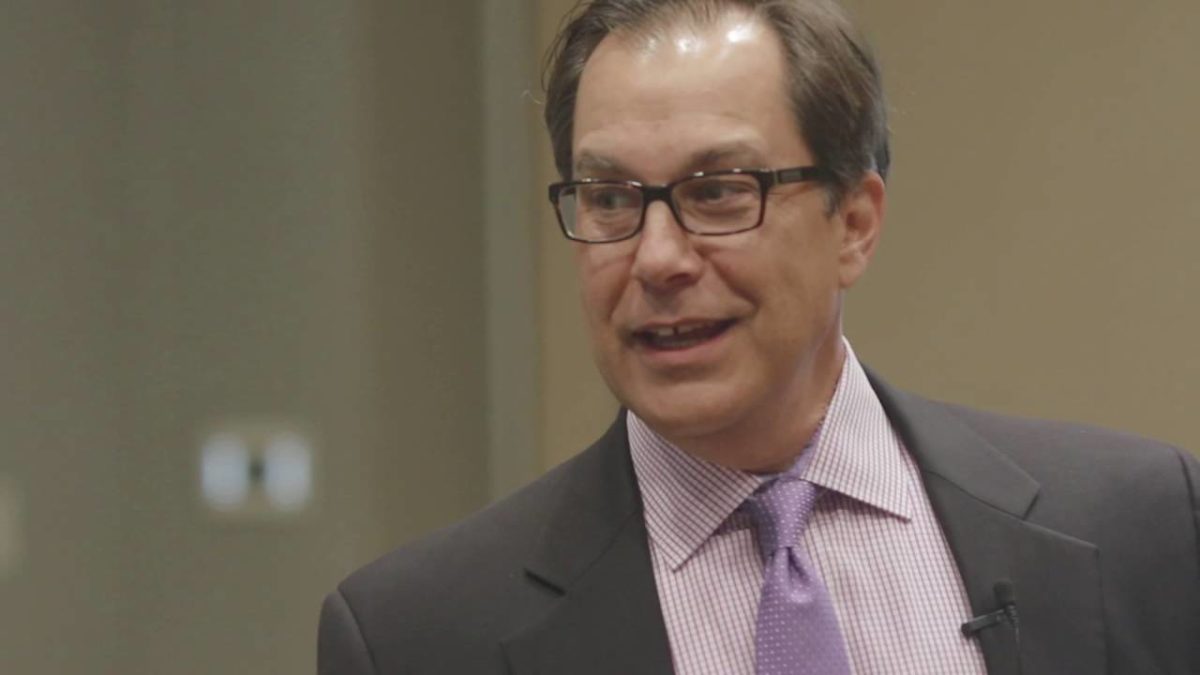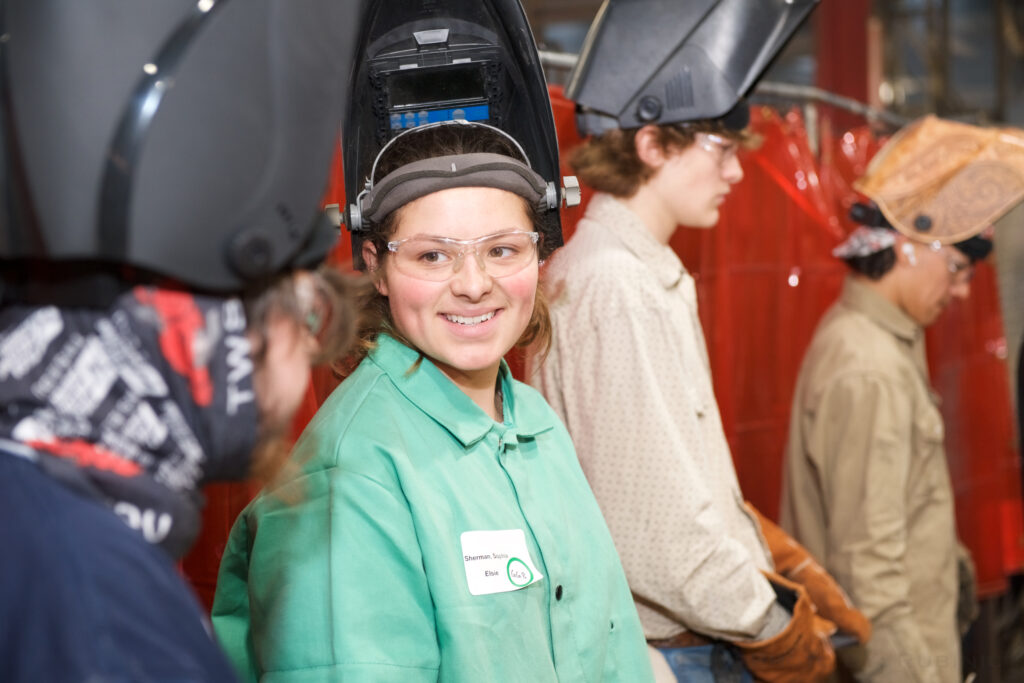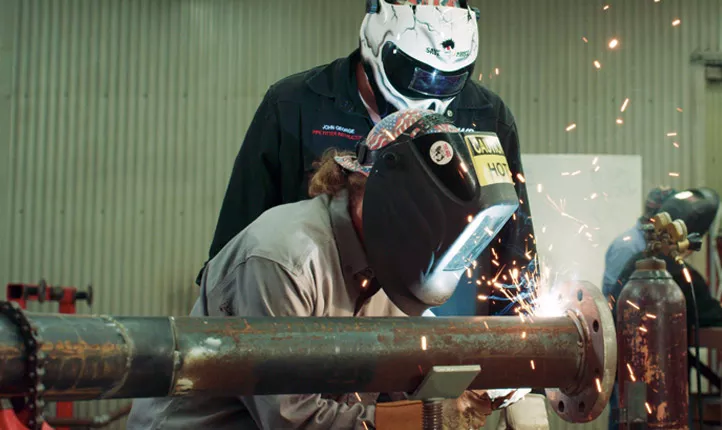Lessons in Leadership: Jim Bologa
Lessons in Leadership: Jim Bologa
How Career Colleges Are Responding to the Pandemic
As the education industry—and the career college sector in particular—continue to respond to the pandemic, innovation and adaptation have become cornerstones of successful operations. While campuses are reopening across the country—and others are facing additional closures and restrictions—school leaders are coping with finding a balance between the on-campus hands-on training their students rely on and flexible online services to help them continue their education no matter what else is going on in the world.
We talked to Jim Bologa, president and CEO of Porter & Chester Institute and YTI Career Institute, about what his schools are doing to support students in an uncertain and constantly evolving landscape—and why some of the changes they’ve made will remain in place long after COVID-19 had dissipated.
Here is what Jim had to say.
Facing Challenges
Because we operate in three states, the most challenging part of responding to the COVID-19 pandemic has been constantly maintaining awareness and staying informed about current infection control protocols and requirements. It is a little bit different in each state and some states are, obviously, a little bit more active than others. Trying to stay on top of all of that—making sure that we’re able to keep everybody safe and that we’re following all the infection control protocols—has certainly been at the forefront of our priorities for both me and my team.
Our business model has moved from an on-ground operation to almost entirely online. Even today, we still don’t have much of our support staff on campus out of an abundance of caution and to ensure infection prevention and control. That means our marketing, admissions, financial aid, career services, student services—all of these teams are continuing to work remotely. But we’ve been able to use various forms of technology to continue to engage students and keep the interaction robust even in a virtual setting. We’ve updated our website to offer additional capacity for helping students no matter where they are. They can go to porterchester.edu or yti.edu and do many of the things that they might have done on campus in the past: They can complete an application. They can fill out our readiness questionnaires. They can get in touch with financial aid or career services. They can participate in faculty interviews via Zoom or other teleconferencing platforms. It’s really incredible how we’ve been able to facilitate all those processes without having to rely on those in-person interactions.
Looking to the future, now we’re trying to rethink our campus relocation strategy. We have a lot of space right now that just isn’t being used. Historically, we’ve looked for spaces that have 50,000 square feet or so of space. But since we’ve come to rely so heavily on our learning management system, which provides a tremendous amount of flexibility for both our instructors and our students, we need to determine what our ideal campuses really look like to best serve our school community.
Finding Silver Linings
While there’s no question that it’s been a difficult year, we have also found plenty of positives in all this change that has occurred. First and foremost, we have been so impressed by the resiliency of our students, faculty, and staff. We’ve had to deal with fairly adverse situations and quick turnarounds in needing to switch from an on-ground to online school in March and then finding the right balance in a hybrid environment since the summer. They have all shown great patience and commitment to education even in the face of uncertainty.
In the Classroom
As we continue to move forward, we’re starting to use simulation software and equipment to replicate some of the typical in-person learning requirements. For example, our practical nursing students must complete direct patient care hours. Because our students aren’t necessarily able to be in a hospital or in other medical environments due to the pandemic, we’re able to use high-fidelity mannequins that can be programmed to simulate a real-world experience. There’s a lot of innovation, a lot of technology, that we hope to continue using into the future—and that has all grown out of that resiliency and dedication to enriching the student learning experience.
Our students thrive in a hands-on experience and they enjoy our industry-standard lab environments. It’s what helps many of our students really get a feel for what becoming a vet tech or a respiratory therapist or an automotive technician or an electrician will be like. The hands-on tangible skill attainment that they get is definitely going to stay intact. The lecture piece, though: I think everybody’s getting used to having lectures virtually, and that will likely stay online to offer students greater flexibility outside of the lab environment.
That change in delivery model has also made it possible to shorten program lengths for our students who were enrolled in an 18-month evening program. Changing how the non-lab coursework is delivered to students means that the program is much more similar for both our daytime and evening students, meaning that they’re all able to complete their program in about 12 months’ time. That’s an innovative solution we’re really excited about to keep the student experience rich and robust—while also affording them the opportunity to complete their education in a timelier fashion.
Staying Connected
But positive change hasn’t been limited to the classroom side of things. Shortly after the pandemic started, we began hosting Webinar Wednesdays. Each week, we offered two webinars—one around lunchtime and one around dinnertime—and they became virtual career fairs, highlighting all of our campus locations and each of our educational programs. And that’s worked quite well to get people connected with the school and what we’re doing at each campus. We also began designing webinars specifically for high school counselors and for representatives from workforce development boards and adult education agencies that we’ve worked with in the past. It has been a chance to offer information about our programs and services—even a FAFSA Friday series!—to help them understand what we’re doing even in the midst of a pandemic. It may be one- or two-dimensional, but I think they appreciate it—and it keeps those lines of communication open in case they have further questions.
We’re also new to podcasting with the channel that we launched earlier this year called Inside Career Technical Education. It’s another way for us to share information about our schools and our programs, as well as to keep the community informed about our response to COVID-19 and the various requirements and restrictions associated with the pandemic. We’ve also featured graduate students who have come on to talk about their experience in the various programs and their successes after graduation. And coming up, we’re going to start having employers on the podcast to talk about their companies and their needs. These are companies who already have our graduates working for them, and we think they’ll provide some really great insights for our prospective students wondering about career opportunities.
Preparing for the Future
I think the pandemic has accelerated the economics of higher education—and specifically the value proposition of an opportunity to gain tangible skills that lead to an essential career. If you look at a lot of governors’ executive orders this past year, in terms of who they’ve defined as being essential to our communities, you’ll see skilled trades including plumbers, electricians, HVAC technicians, electronics, information tech roles, and—of course—health care workers. This is leading folks to rethink what a successful career or a good education might look like.
I was recently at our campus in Brockton, Massachusetts, and spoke with some of our electrical students in their lab. One of them had just left a traditional four-year school after his sophomore year. He and his family had started talking about what his future was going to be like, and he had a friend who was actually attending our school’s electrical program. He was able to come by at the beginning of this year and decided that he was going to enroll to become an electrician. He was really impressed with our industry model lab environment and found that it was the right decision for him. He saw the value. Right now, electricians are in fairly high demand. Employers have lots of open positions they’re looking to fill because they have work but not enough trained workers.
The shift is coming. Folks recognize that being a plumber or being a nurse or being an automotive technician—there is a bright economic pathway out there. The thing about higher education in general is that people need to embrace lifelong learning: People are going to seek education in pieces over time as their careers demand it. The day is gone when you could get a four-year degree and rely on that information to help you through most of your career. Most of our programs are changing constantly to reflect not just job needs, but also industry best practices and trends in the field. Automotive technology, for instance, has seen tremendous innovation over the years. A decade or two again, most passenger vehicles were about 30 percent electronic components. Today, it’s probably 85 percent. And in another decade or two, gas combustion motors will likely be outliers and electric cars the norm.
About PCI and YTI
The schools’ program offerings vary slightly, but they’re all primarily focused on the health care and skilled trades fields. But we also offer programs like criminal justice, business operations management, computer-aided drafting and design, and computer network technology as well. Students have the opportunity to earn a certificate or an associate degree in their chosen area of study.
Right now, there’s increased student interest in several of our health-related programs, especially respiratory therapy, practical nursing, medical billing and coding, and health information management. This is likely in direct response to what’s currently going on with the pandemic, including the increased need and growing shortages of skilled workers. But that isn’t limited to only health care: There’s also a tremendous amount of interest in other jobs that have been deemed “essential” by our governors, including skilled trades and information technology jobs.
These roles are going to be critical for communities in the coming months, and we’re honored to help our students train for them.
To learn more about Porter & Chester Institute, visit www.porterchester.edu.
To learn more about YTI Career Institute, visit www.yti.edu
More On Education
Let’s Talk Picking the Right Trade School with Universal Technical Institute
Let’s Talk Picking the Right Trade School with Universal Technical Institute: SEASON 5, EPISODE 3 MORE FROM OUR EPISODE ON picking the right career school with universal technical institute Find Your Perfect Training Program At UTI, our mission is to prepare technicians for the careers…
Let’s Talk Women in Welding with Tulsa Welding School
Let’s Talk Women in Welding with Tulsa Welding School: SEASON 5, EPISODE 2 MORE FROM OUR EPISODE ON Women in welding WITH tulsa welding School Contact TWS — Houston, TX Click Here For A Virtual Tour! Location 243A Greens Rd. Houston, TX 77060 Contact tulsa…
Let’s Talk Aviation with Spartan College of Aeronautics and Technology
Let’s Talk Aviation with Spartan College of Aeronautics and Technology: SEASON 5, EPISODE 1 MORE FROM OUR EPISODE ON aviation CAREERS WITH SPARTAN COLLEGE OF AERONaUTICS AND TECHNOLOGY Contact Spartan College — Tulsa Main Campus Click Here For A Virtual Tour! Location 8820 East Pine…
Does your career college enrollment strategy include high school students? It should.
For decades, career college recruitment specialists have focused primarily on enrolling older adults: those with time in the workforce, with families, with less desire and fewer resources to commit to a traditional on-campus, four-year degree. Those adult learners aren’t going anywhere, thanks to employment market…
Making HERstory: Women in Welding Careers
The world is currently experiencing a shortage of qualified skilled welders as part of the greater “Skilled Trades Gap”. Filling this gap is necessary, as welding impacts many industries and supports the maintenance and growth of infrastructure. With the demand increase in welding career fields,…
Leave a Reply Cancel reply
- - ADVERTISEMENT - -
Categories
- Alumni Series (13)
- Automotive (57)
- Aviation (15)
- Business (14)
- Business & Arts (18)
- Career College Expositions (7)
- Career Development (96)
- CCC Blog (1)
- CCC Podcast (9)
- College Resource (90)
- College Showcase – Lincoln Tech (6)
- College Showcase – New Jersey (8)
- College Showcase – Pennco Tech (1)
- College Showcase – Universal Technical Institute (2)
- Continuing Education (154)
- Cosmetology (3)
- Counselor Resources (108)
- Criminal Justice (3)
- Dental Assistant (2)
- Education (109)
- Financial Literacy (17)
- Health Sciences (50)
- Heritage Series (3)
- High School Recruitment Series (4)
- Housing Series (10)
- HVAC (8)
- Imagine America Scholarships (12)
- Information Technology (17)
- Massage Therapy (5)
- Mechanical Sciences (109)
- Medical Assistant (12)
- Millennial Student Series (4)
- News (11)
- Nursing (22)
- Online education (13)
- Pandemic Proof Series (4)
- Personal Finance (17)
- Podcast (90)
- Research (11)
- Road Map Series (2)
- Scholarships (12)
- Social Media Series (4)
- Strata Tech (3)
- Student Success (29)
- Study Tips (3)
- Time Managment (1)
- Top 10 (10)
- Trucking (2)
- Uncategorized (14)
- Universal Technical Institute (19)
- Veteran Affairs (8)
- Welding (24)
- Women in Skilled Trades (3)
Tags
- - ADVERTISEMENT - -







